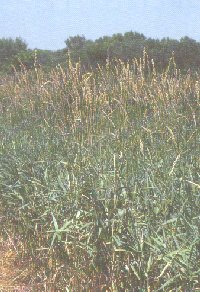- Home
- About S&T
- Taxa/Organisms
- Ecosystems
- Issues
- Methods & Tools
- Reports & Publications
- Location
- Search
Publisher: USGS | Science Center: Patuxent Wildlife Research Center (PWRC, Laurel) | Format: URL
www.pwrc.usgs.gov — Information about ecotoxicological exposure and its effects on terrestrial vertebrates residing in estuarine and coastal habitats like the Atlantic, Gulf and Pacific Coasts, Alaska and Hawaii, as well as the Great Lakes. These vertebrates include birds, mammals, amphibians and reptiles. The data is a compilation of results from computerized More...

Publisher: USGS | Science Center: Upper Midwest Environmental Sciences Center (UMESC, LaCrosse) | Format: URL
www.umesc.usgs.gov — Zebra mussels have caused drastic declines in native clam and mussel populations in some locations. Zebra mussels compete with other invertebrates and young fish for plankton, the primary food source for these groups. UMESC scientists are investigating the effects zebra mussels are having on the riverine ecosystem. This study examines the effects More...

Publisher: USGS | Science Center: Great Lakes Science Center (GLSC, Ann Arbor) | Format: .PDF
www.glsc.usgs.gov — This report is a result of an annual bottom trawl survey conducted on Lake Huron since 1973, which is used to examine relative abundance, size and age structure, and species composition of the prey fish community. The survey reveals that juvenile rainbow smelt abundance in 2006 is slightly higher than the long-term mean for the time series since More...

Publisher: USGS | Science Center: Northern Prairie Wildlife Research Center (NPWRC, Jamestown) | Format: URL
www.npwrc.usgs.gov — This resource is a species profile of the purple loosestrife (Lythrum salicaria), which is considered an invasive plant species. Its displacement of native species in wetlands has led to the loss of suitable habitat for wildlife. L. salicaria is the only reddish-purple flowered plant to develop massive monospecific blocks of showy floral displays More...

Publisher: Other Federal Agency (Center for Coastal Monitoring and Assessment (CCMA)) | Format: URL
www8.nos.noaa.gov — This website identifies and assesses biological effects associated with contaminant exposure. Over forty intensive regional studies have been conducted since 1986 using the Sediment Quality Triad approach which utilizes a stratified random sampling method to determine the areal extent of contaminated sediments. The data include: sediment More...

Publisher: USGS | Science Center: Florida Integrated Science Center (FISC, Gainesville) | Format: URL
fl.biology.usgs.gov — The objectives of Southeastern ARMI are to determine the status and trends of amphibian populations on DOI lands in the southeastern United States and U.S. Caribbean and to provide information useful in determining causes of declines should they be discovered. Meeting the needs and expectations of the Nation for monitoring the status of More...

Publisher: USGS | Science Center: Upper Midwest Environmental Sciences Center (UMESC, LaCrosse) | Format: URL
www.umesc.usgs.gov — Populations of amphibians have been declining around the world (Stokstad 2004). This website provides links to resources that deal with amphibian declines mainly in the 13-state Upper Mississippi ARMI region, species, current research, research methods, research team profiles, a list of partners, products, frog and toad calls, other links related More...

Publisher: USGS | Science Center: Patuxent Wildlife Research Center (PWRC, Laurel) | Format: URL
www.pwrc.usgs.gov — From the website: "This website provides a resource for learning breeding calls of frogs and toads in the eastern United States and Canada. This site provides links to a frog call lookup tool, public quizzes for identifying frog calls in states and provinces through amphibian monitoring programs such as Frogwatch USA, NAAMP, Parks/Refuges by More...

Publisher: USGS | Science Center: Upper Midwest Environmental Sciences Center (UMESC, LaCrosse) | Format: URL
www.umesc.usgs.gov — This resource is a species profile and issue overview of the reed canary grass (Phalaris arundinacea). It discusses its increasingly dominating behavior in wet meadows in the Upper Midwest. Reed canary grass is highly tolerant to flooding, resistant to burning, and quickly forms virtual monocultures by shading native grasses and forbs with its More...

Publisher: USGS | Science Center: Forest and Rangeland Ecosystem Science Center (FRESC, Corvallis) | Format: URL
srfs.wr.usgs.gov — The Bald Eagle Census, served up by the US Geological Survey and coordinated by the 2007 Midwinter Bald Eagle Survey, counted bald eagle populations in 37 States. The survey is a unique source of long-term data on bald eagles and provides an opportunity to monitor changes or threats to habitat at important wintering areas. Users have access to More...
